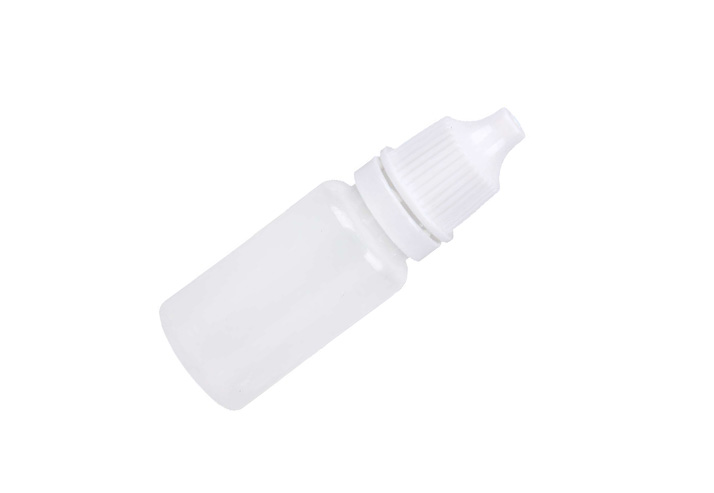Ciloxan
Ciloxan eye drops contain the active ingredient ciprofloxacin (antibiotic), which acts against a number of bacteria that can cause eye infections. This medicine is intended for the treatment of conjunctivitis, blepharitis and corneal ulcers of bacterial origin and is only used on medical prescription.
What Does Ciloxan Contain?

1 ml of eye drops contains: ciprofloxacin hydrochloride 3.5 mg (= 3 mg ciprofloxacin base), benzalkonium chloride (preservative), excipients for the manufacture of eye drops.
Presentation: 5 ml dropper bottle.
Uses
The doctor determines the dosage. In general, Ciloxan eye drops are dosed as follows:
In case of bacterial conjunctivitis or blepharitis
- Adults and children from 1 year of age:
- 1st to 2nd day: Instil 1 to 2 drops into the affected eye every 2 hours during the day.
Then instil 1 to 2 drops into the affected eye every 4 hours until the bacterial inflammation has disappeared.
In the case of corneal ulcers
Adults and children from 1 year of age.
Ciloxan should be applied as follows, also at night:
- 1st day: Instil into the affected eye 2 drops every 15 minutes for the first 6 hours, then 2 drops every 30 minutes.
- 2nd day: 2 drops every hour in the affected eye.
- Day 3-14: 2 drops every 4 hours in the affected eye.
Antibiotic treatment must not be stopped without your doctor's agreement. Symptoms of eye disease may disappear before the infection is completely cured. If treatment is stopped too soon, there is a risk of the infection returning.
Do not change the dosage prescribed for you without medical authorisation. Consult your doctor or pharmacist if you think the drug is too weak or too strong.
Side Effects
The following side effects may occur when using Ciloxan eye drops:
The following side effects occur frequently (in up to 10 out of 100 people)
Burning or stinging in the eye, sensation of a foreign body, red eyes, deposits on the cornea, alteration of taste.
The following side effects occur occasionally (in up to 10 out of 1000 people)
Eye pain, dry eyes, swollen eyes, itching, loss of visual acuity or blurred vision, hypersensitivity to light, eye secretions, increased tear flow, crusting of the eyelid margins, flaking of the eyelid, nausea.
The following side effects occur rarely (in no more than 10 out of 10,000 people)
Hypersensitivity, dizziness, inflammation of the cornea, inflammation of the conjunctiva, double vision, irritation of the eye, inflammation of the eye, earache, cold, diarrhoea, stomachache, inflammation of the skin.
White precipitates have frequently been observed in the eyes of patients with corneal ulcers undergoing treatment with Ciloxan. However, these precipitates disappear with continued treatment, and do not require interruption. They have no negative influence on the clinical course of the corneal ulcer or on visual acuity. Please inform your doctor if you experience these or any other symptoms.
The active ingredients contained in ophthalmic preparations can enter the bloodstream. As a result, undesirable effects may appear in areas of the body other than the eye (e.g. occasional nausea and, in very rare cases, allergic-type effects such as cyanosis, respiratory problems, tendonitis, oedema and/or skin redness). If you notice these symptoms or any other effects that may be related to the use of Ciloxan eye drops, consult your doctor or pharmacist immediately.
If you notice any other side effects, please tell your doctor or pharmacist.
Precautions
Consult your doctor immediately if the treated eye irritations worsen within 2 to 3 days of starting treatment with Ciloxan eye drops or if you notice any new symptoms.
Treatment with Ciloxan should be stopped at the first sign of tendonitis.
Please tell your doctor or pharmacist if you are suffering from any other illnesses, are allergic or are already taking other medicines internally or applying them to the eye (even if you are self-medicating)!
This medicine may affect reactions, driving ability and the ability to use tools or machines!
If you experience blurred vision after instilling this medicine, avoid driving a vehicle or operating machinery until this condition ceases.
What else do you need to consider?
This medicine has been prescribed for you by your doctor to treat the eye irritations you are currently suffering from. The antibiotic contained in Ciloxan eye drops is not effective against all the micro-organisms that cause eye infections. Incorrect use of the wrong antibiotic or the wrong dose could cause complications. Never use this medicine without a doctor's prescription for the treatment of an illness other than the one you have or for other people. In the event of a new infection occurring at a later date, do not use the eye drops without consulting your doctor again. Ciloxan eye drops are intended for administration to the eye only. Do not swallow this medicine.
Note for contact lens wearers:
Do not wear your contact lenses during treatment with Ciloxan eye drops.
Special remarks
Sterility:
To avoid microbial contamination of the eye drops, do not touch the dropper with your hands or eyes. Close the bottle tightly immediately after instilling the eye drops and always store it tightly closed.
Expiry date:
Do not use the eye drops beyond the expiry date ("To Use") and not more than 30 days after the bottle is first opened.
Storage:
Store the bottle at room temperature (15°-25°C), away from light and heat and out of the reach of children. Do not keep refrigerated. Do not freeze.
Overdose:
When you have instilled too many drops into the affected eye, rinse out the excess eye drops with lukewarm water.
At the end of treatment, return each opened bottle to your point of sale (doctor or pharmacy) so that the eye drops can be disposed of properly.
For further information, consult your doctor or pharmacist, who have detailed information for professionals.
When should Ciloxan not be used?
In the event of known or suspected hypersensitivity (allergy) to any of the substances in Ciloxan eye drops (e.g. ciprofloxacin) or to a similar antibiotic (quinolone).
Pregnancy and Breastfeeding
During pregnancy and when breast-feeding, use this medicine only on the advice of your doctor.
Eye Infections: Symptoms, Causes and Treatments
Conjunctivitis, styes, keratitis... Mainly caused by viruses or bacteria, eye infections cause unpleasant and painful symptoms. So it's important to seek medical advice as soon as the first signs of eye infection appear. So what is an eye infection? How can you tell if you have an eye infection? And why consult a doctor?



